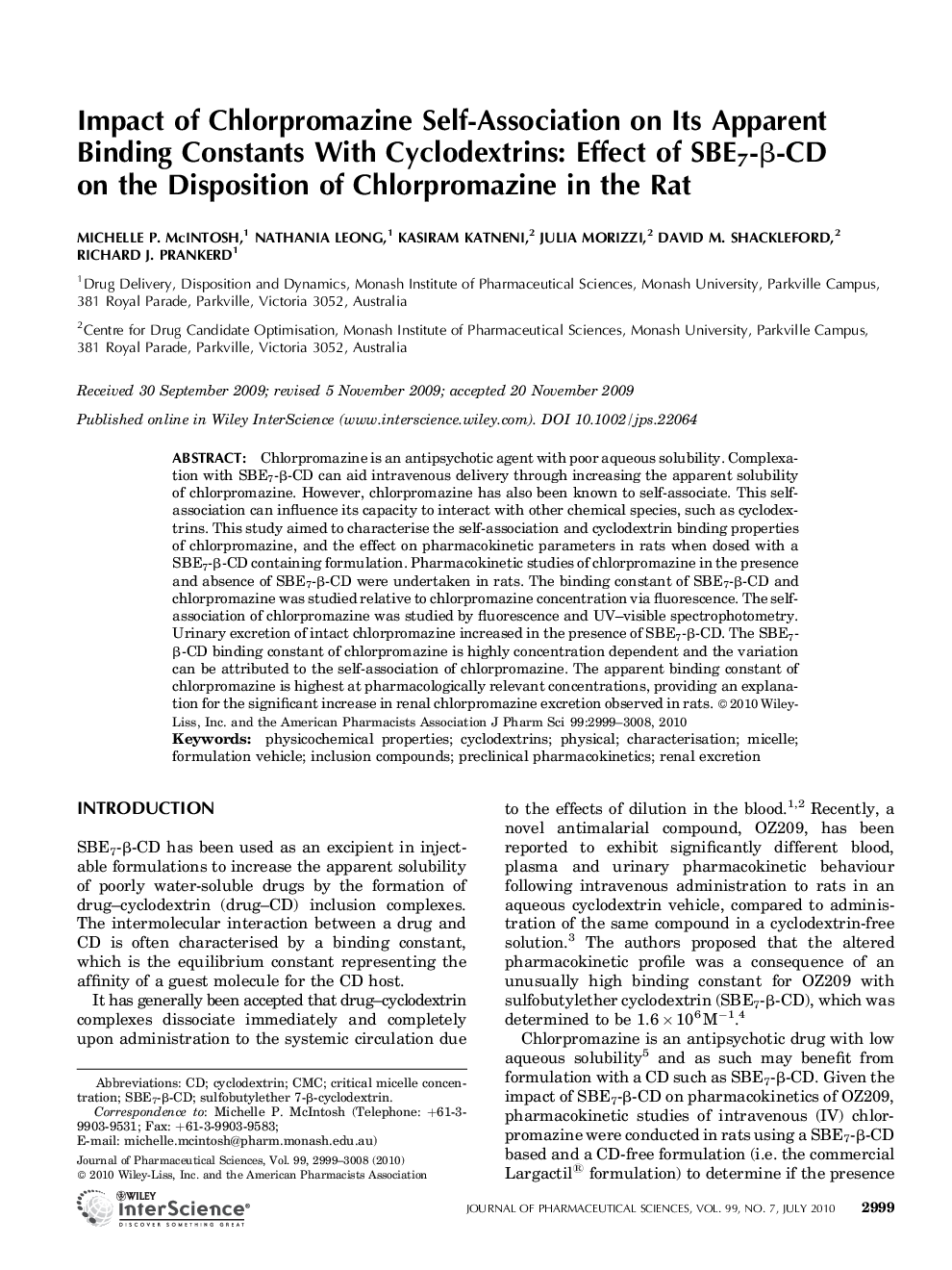| Article ID | Journal | Published Year | Pages | File Type |
|---|---|---|---|---|
| 2486266 | Journal of Pharmaceutical Sciences | 2010 | 10 Pages |
Abstract
Chlorpromazine is an antipsychotic agent with poor aqueous solubility. Complexation with SBE7-β-CD can aid intravenous delivery through increasing the apparent solubility of chlorpromazine. However, chlorpromazine has also been known to self-associate. This selfassociation can influence its capacity to interact with other chemical species, such as cyclodextrins. This study aimed to characterise the self-association and cyclodextrin binding properties of chlorpromazine, and the effect on pharmacokinetic parameters in rats when dosed with a SBE7-β-CD containing formulation. Pharmacokinetic studies of chlorpromazine in the presence and absence of SBE7-β-CD were undertaken in rats. The binding constant of SBE7-β-CD and chlorpromazine was studied relative to chlorpromazine concentration via fluorescence. The selfassociation of chlorpromazine was studied by fluorescence and UV-visible spectrophotometry. Urinary excretion of intact chlorpromazine increased in the presence of SBE7-β-CD. The SBE7- β-CD binding constant of chlorpromazine is highly concentration dependent and the variation can be attributed to the self-association of chlorpromazine. The apparent binding constant of chlorpromazine is highest at pharmacologically relevant concentrations, providing an explanation for the significant increase in renal chlorpromazine excretion observed in rats.
Keywords
Related Topics
Health Sciences
Pharmacology, Toxicology and Pharmaceutical Science
Drug Discovery
Authors
Michelle P. Mcintosh, Nathania Leong, Kasiram Katneni, Julia Morizzi, David M. Shackleford, Richard J. Prankerd,
